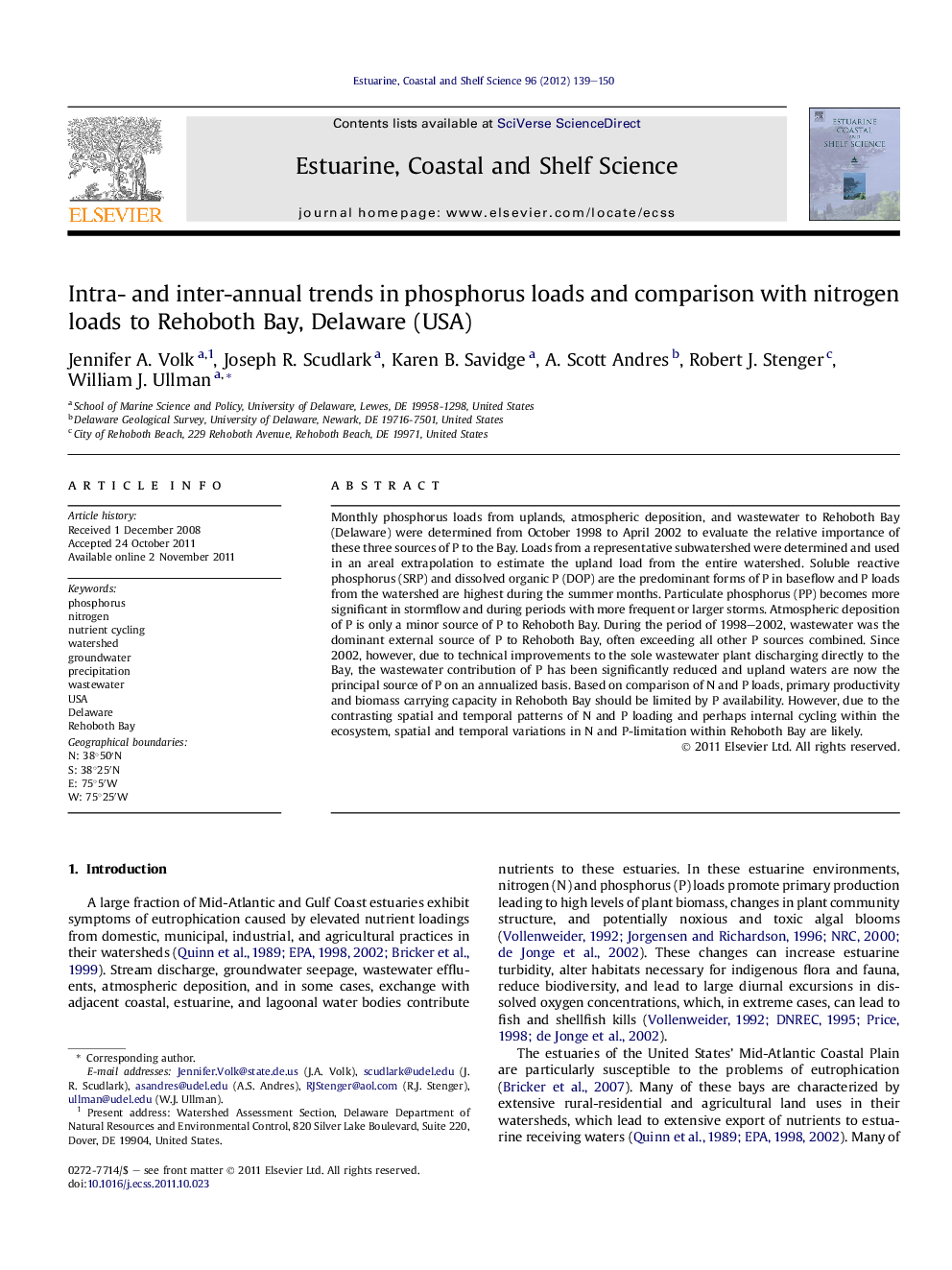| Article ID | Journal | Published Year | Pages | File Type |
|---|---|---|---|---|
| 4540304 | Estuarine, Coastal and Shelf Science | 2012 | 12 Pages |
Monthly phosphorus loads from uplands, atmospheric deposition, and wastewater to Rehoboth Bay (Delaware) were determined from October 1998 to April 2002 to evaluate the relative importance of these three sources of P to the Bay. Loads from a representative subwatershed were determined and used in an areal extrapolation to estimate the upland load from the entire watershed. Soluble reactive phosphorus (SRP) and dissolved organic P (DOP) are the predominant forms of P in baseflow and P loads from the watershed are highest during the summer months. Particulate phosphorus (PP) becomes more significant in stormflow and during periods with more frequent or larger storms. Atmospheric deposition of P is only a minor source of P to Rehoboth Bay. During the period of 1998–2002, wastewater was the dominant external source of P to Rehoboth Bay, often exceeding all other P sources combined. Since 2002, however, due to technical improvements to the sole wastewater plant discharging directly to the Bay, the wastewater contribution of P has been significantly reduced and upland waters are now the principal source of P on an annualized basis. Based on comparison of N and P loads, primary productivity and biomass carrying capacity in Rehoboth Bay should be limited by P availability. However, due to the contrasting spatial and temporal patterns of N and P loading and perhaps internal cycling within the ecosystem, spatial and temporal variations in N and P-limitation within Rehoboth Bay are likely.
